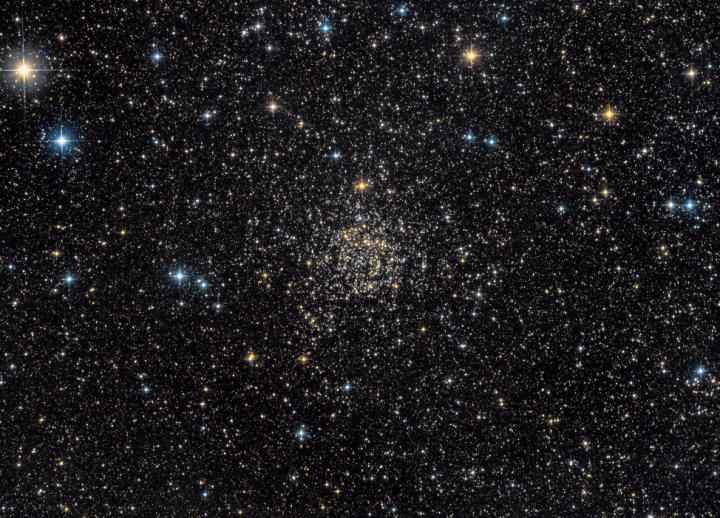The origin of carbon, an element essential to life on Earth, in the Milky Way galaxy is primarily speculation: some are in favor of the idea that low-mass stars blew off their carbon-rich envelopes by stellar winds became white dwarfs, while others place the major site of carbon's synthesis in the winds of massive stars that eventually exploded as supernovae.
Using data from the Keck Observatory near the summit of Mauna Kea volcano in Hawaii collected between August and September 2018, a new study analyzed white dwarfs belonging to the Milky Way's open star clusters - groups of up to a few thousand stars held together by mutual gravitational attraction.

NGC 7789, Caroline's Rose, is an old open star cluster of the Milky Way, which lies about 8,000 light-years away toward the constellation Cassiopeia. Image: Guillaume Seigneuret and NASA
From this analysis, the research team measured the white dwarfs' masses, and using a hypothesis of stellar evolution, calculated their masses at birth. The connection between the birth masses to the final white dwarf masses is called the initial-final mass relation, a fundamental diagnostic in astrophysics that contains the entire life cycles of stars. Previous research always found an increasing linear relationship: the more massive the star at birth, the more massive the white dwarf left at its death.
But when the team calculated the initial-final mass relation, they found that the white dwarfs from this group of open clusters had larger masses than some previously believed. This was in contradiction to the linear trend other models claimed. Stars born roughly 1 billion years ago in the Milky Way didn't produce white dwarfs of about 0.60-0.65 solar masses, as it was commonly thought, but they died leaving behind more massive remnants of about 0.7 - 0.75 solar masses.
The researchers say that this kink in the trend explains how carbon from low-mass stars made its way into the Milky Way. In the last phases of their lives, stars twice as massive as the Milky Way's Sun produced new carbon atoms in their hot interiors, transported them to the surface and finally spread them into the surrounding interstellar environment through gentle stellar winds. The research team's stellar models indicate that the stripping of the carbon-rich outer mantle occurred slowly enough to allow the central cores of these stars, the future white dwarfs, to grow considerably in mass.
The team calculated that stars had to be at least 1.5 solar masses to spread its carbon-rich ashes upon death.
The findings could help scientists understand the properties of galaxies in the universe. By combining beliefs about cosmology and stellar evolution, the researchers believe that bright carbon-rich stars close to their death, like the progenitors of the white dwarfs analyzed in this study, are presently contributing to the light emitted by very distant galaxies. This light, which carries the signature of newly produced carbon, is routinely collected by the large telescopes from space and Earth to probe the evolution of cosmic structures. Therefore, this new understanding of how carbon is synthesized in stars also means having a more reliable interpreter of the light from the far universe.






Comments